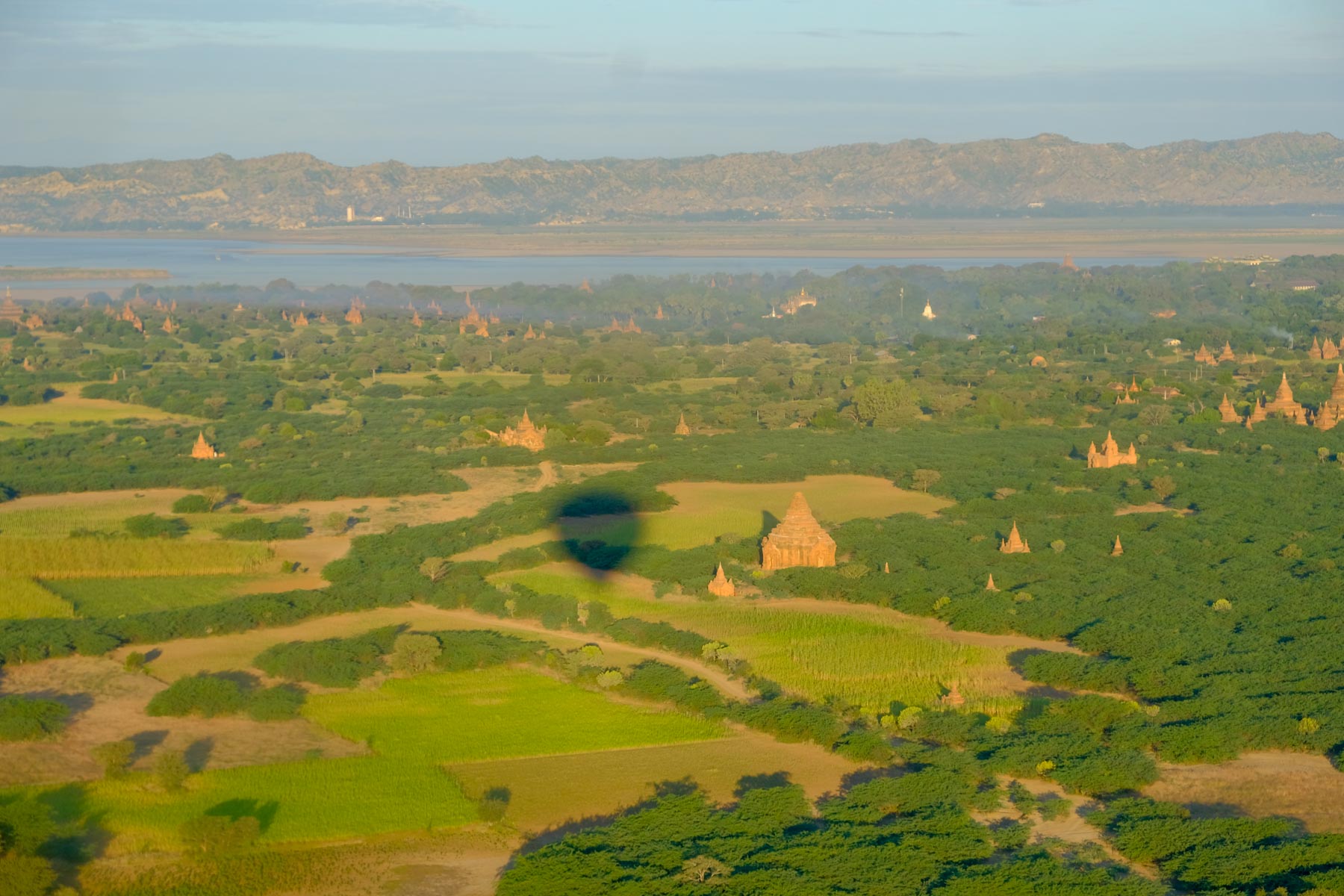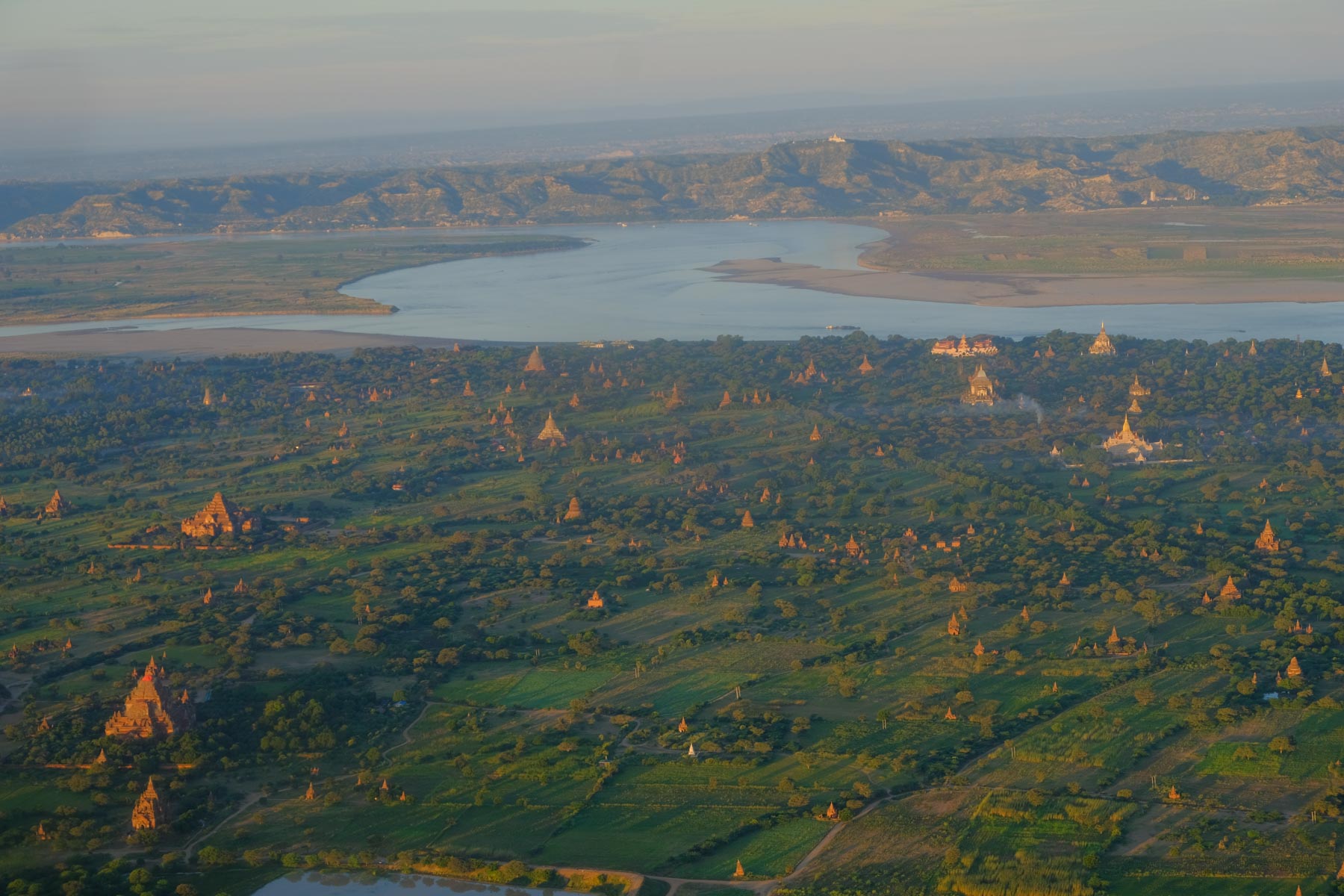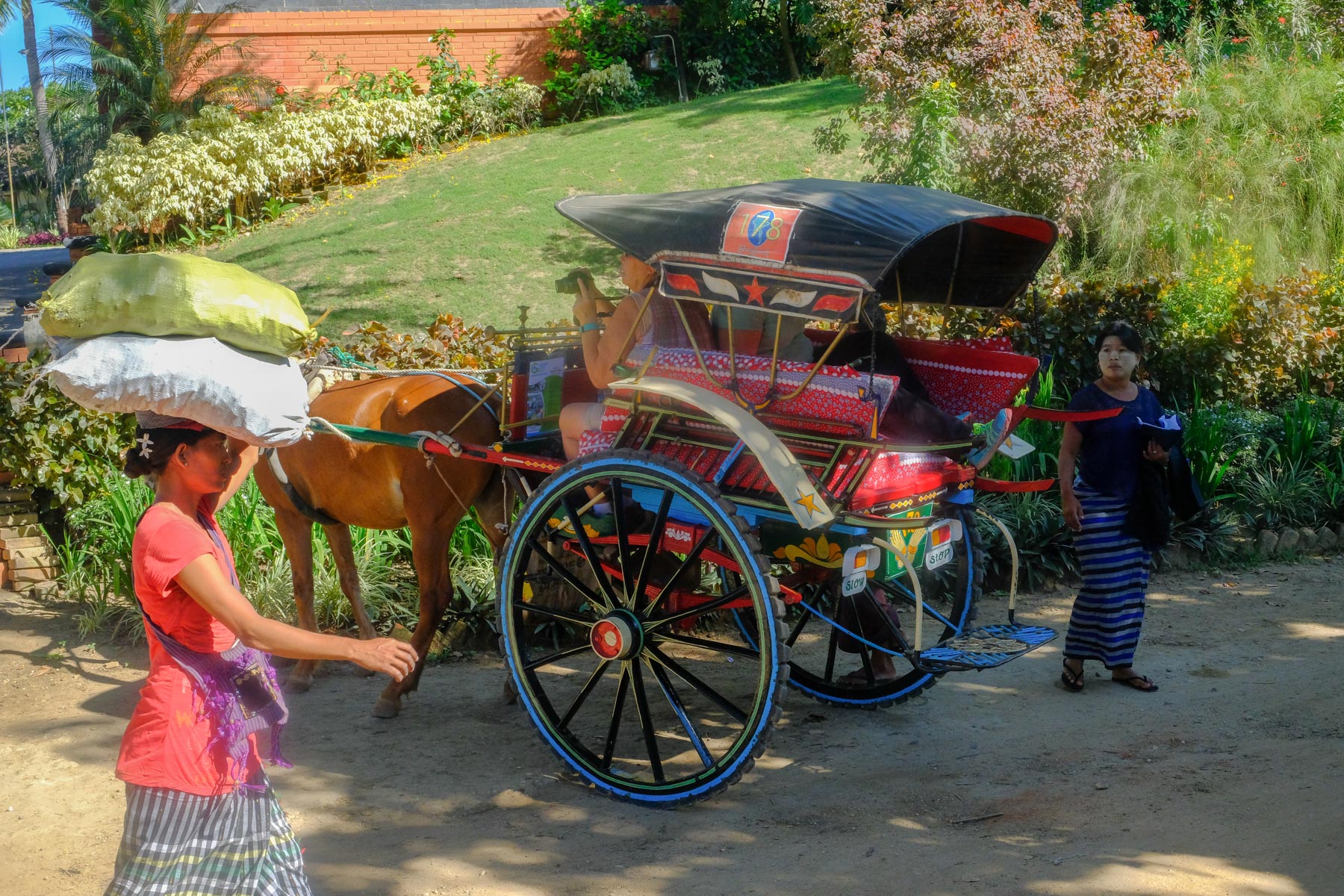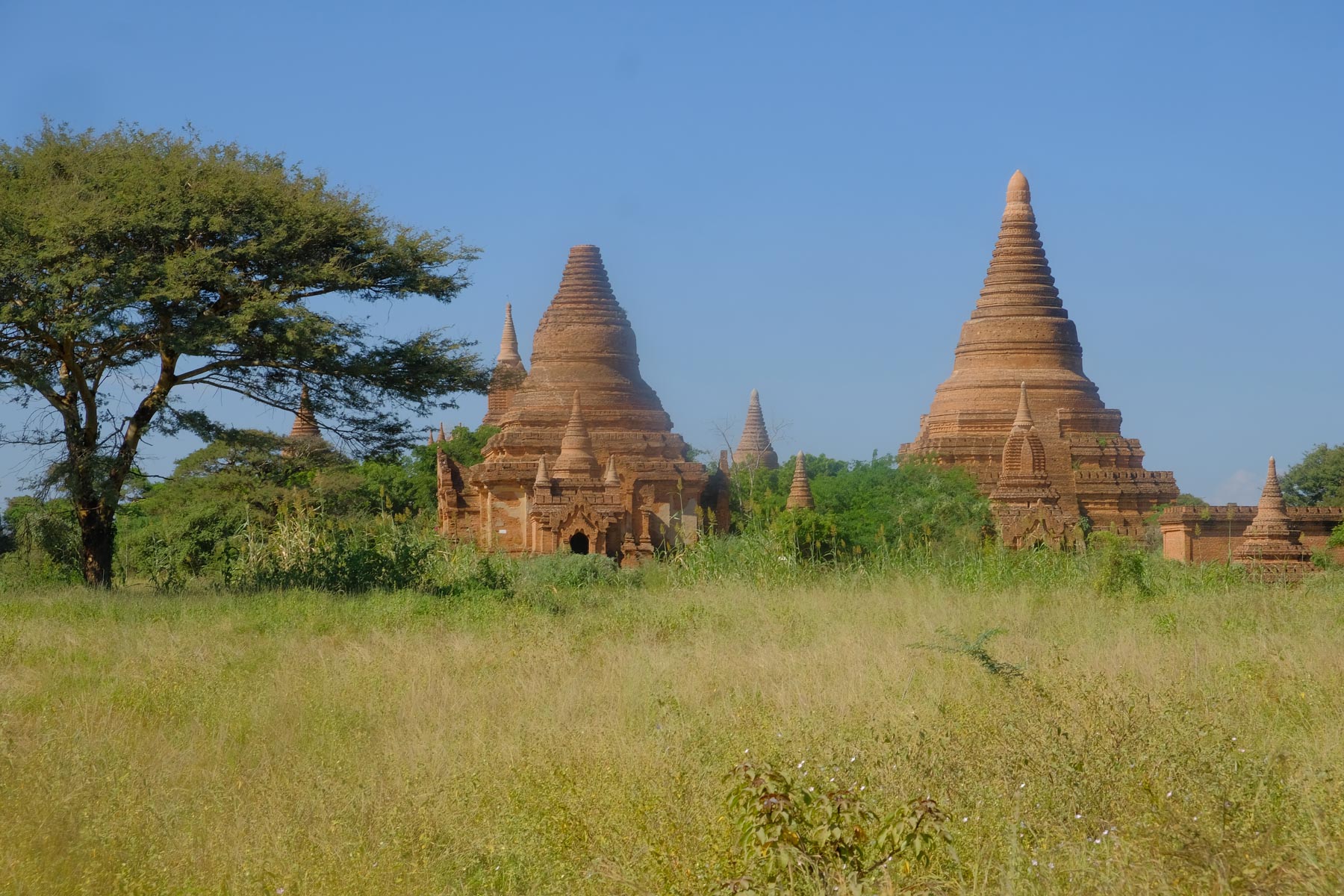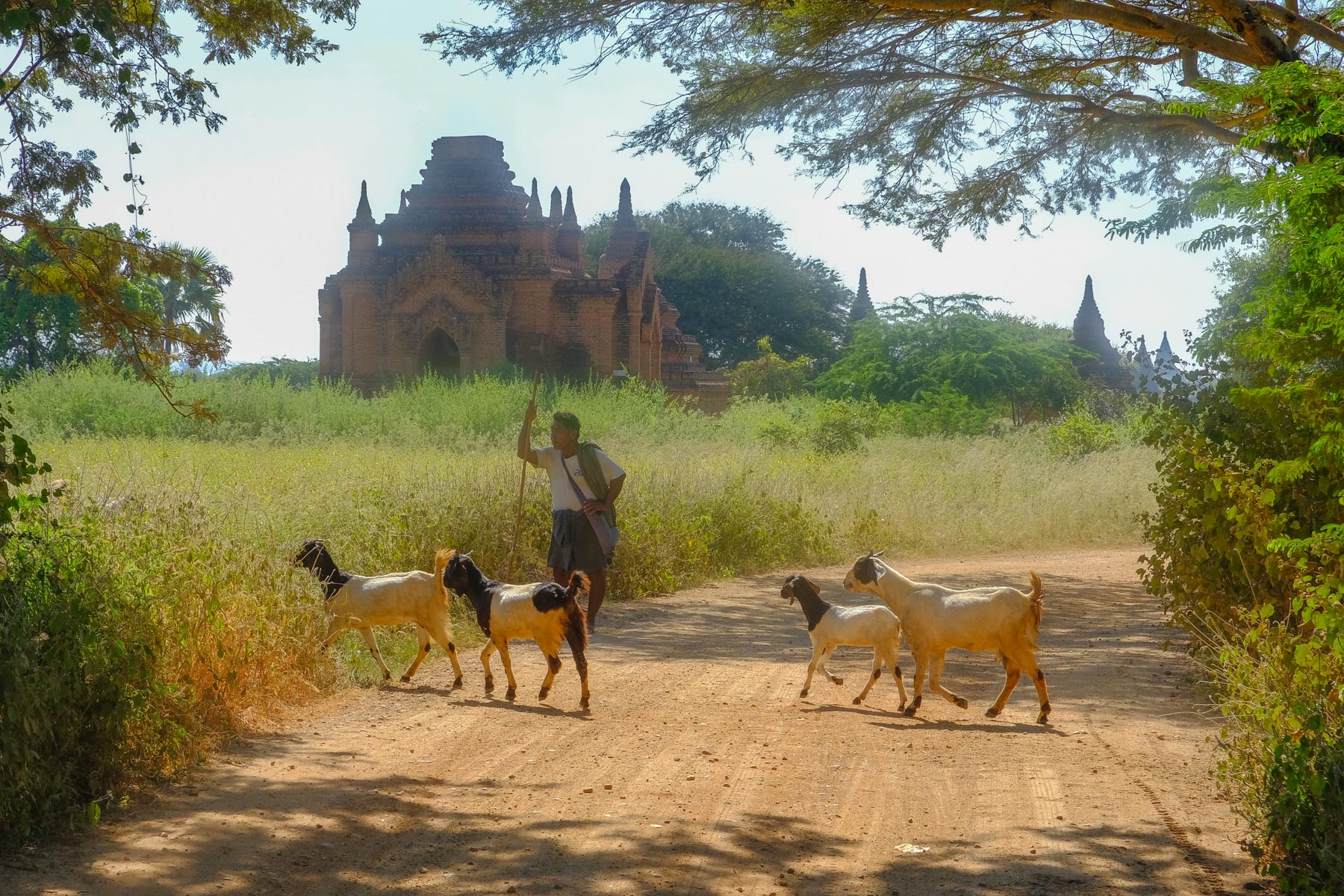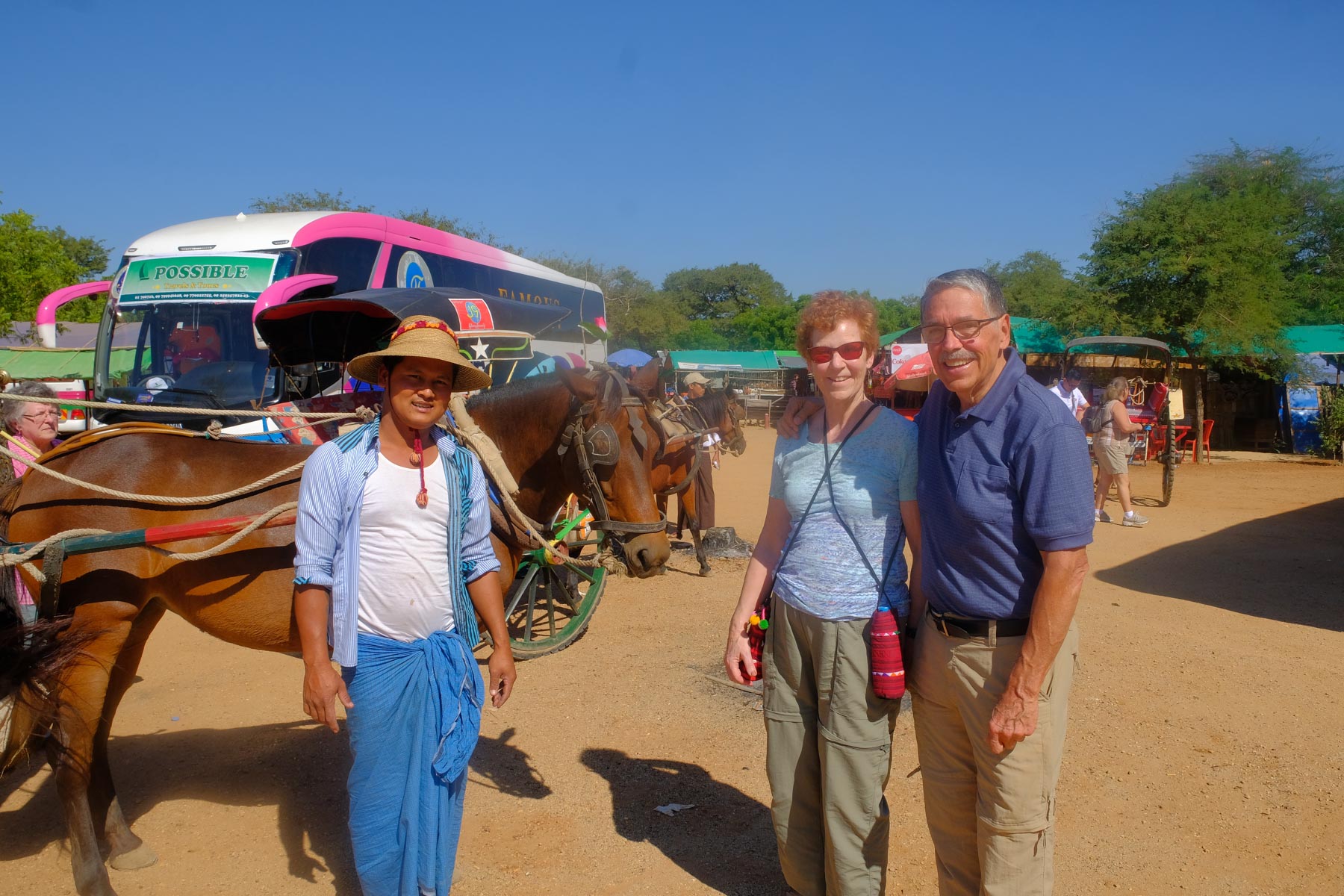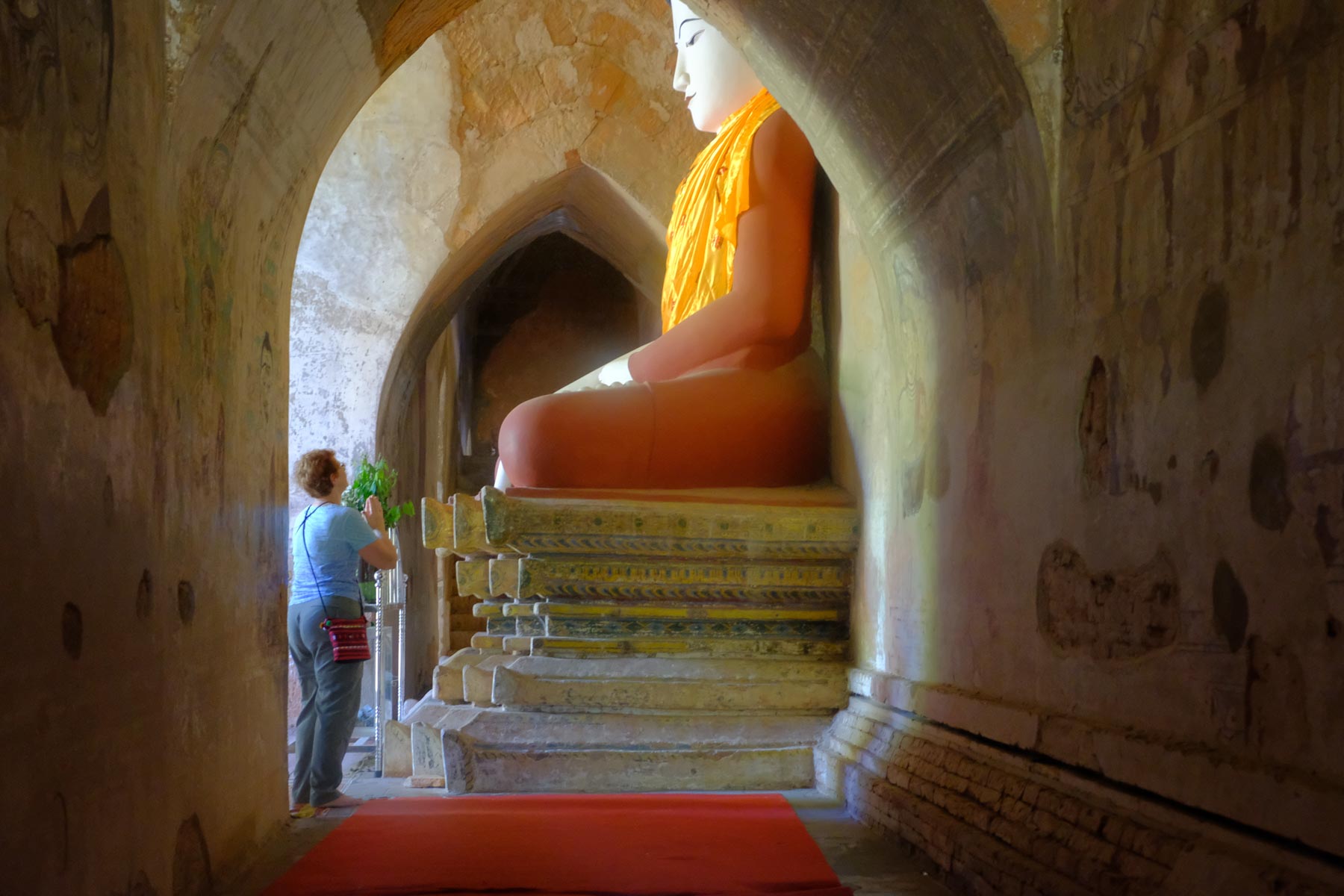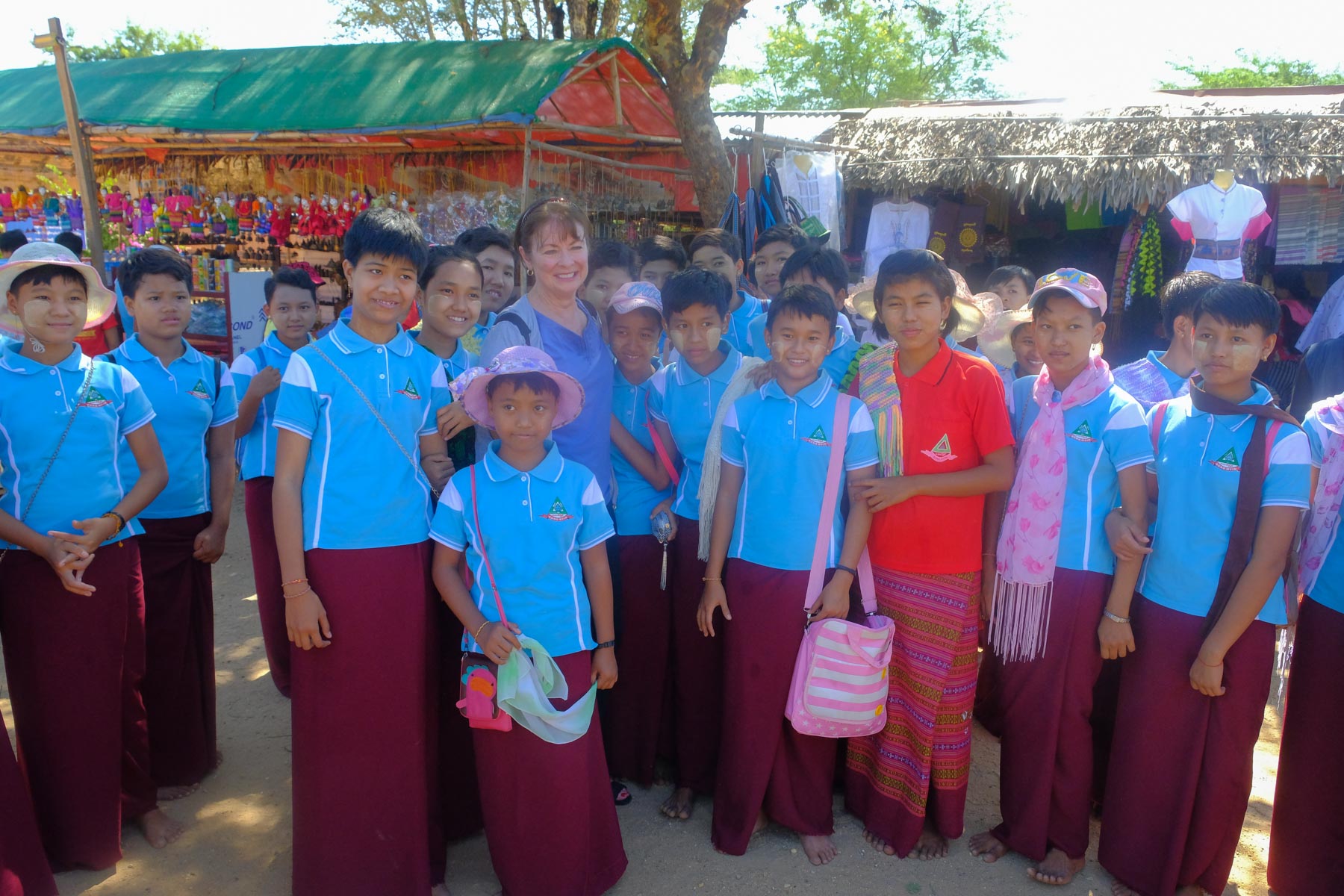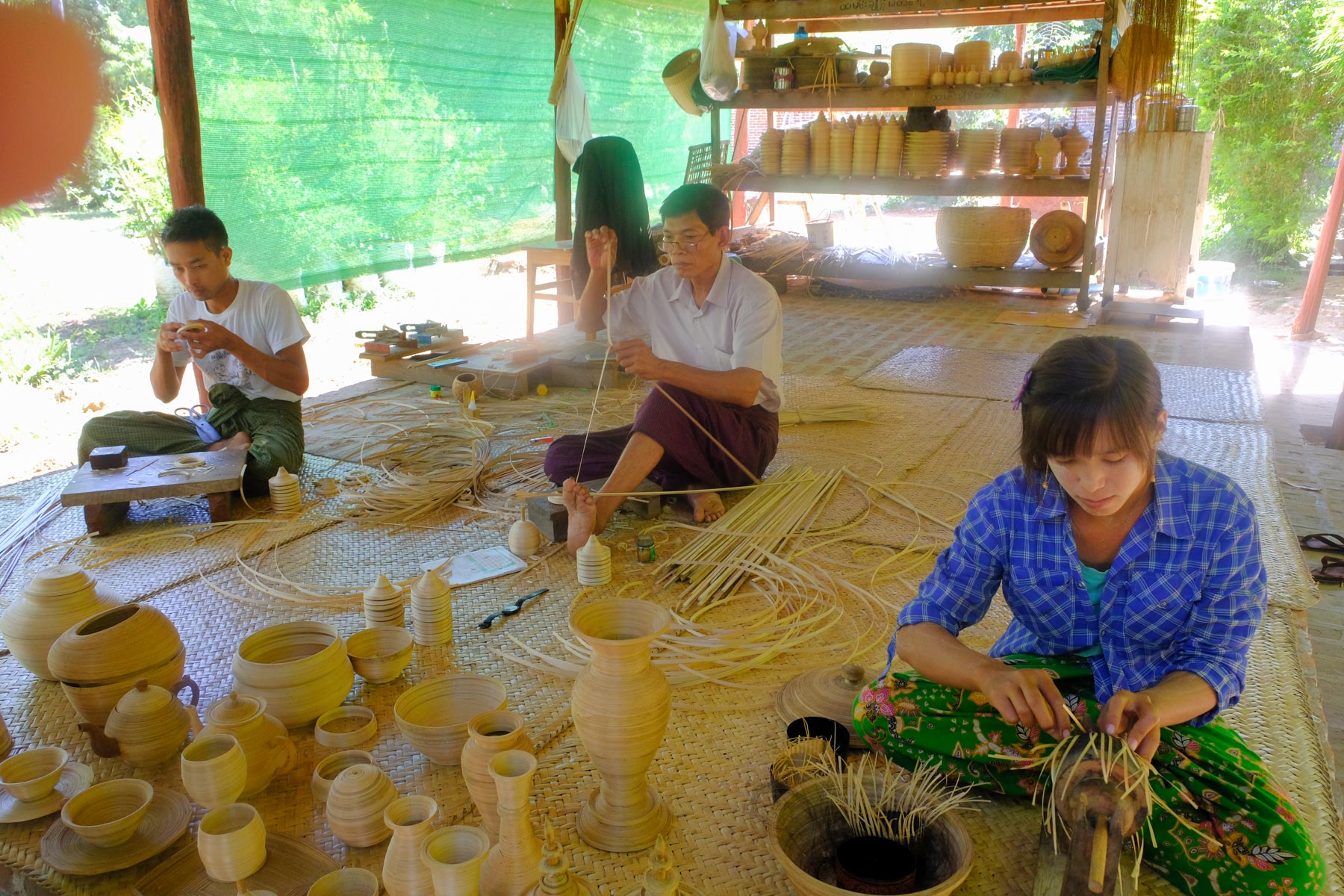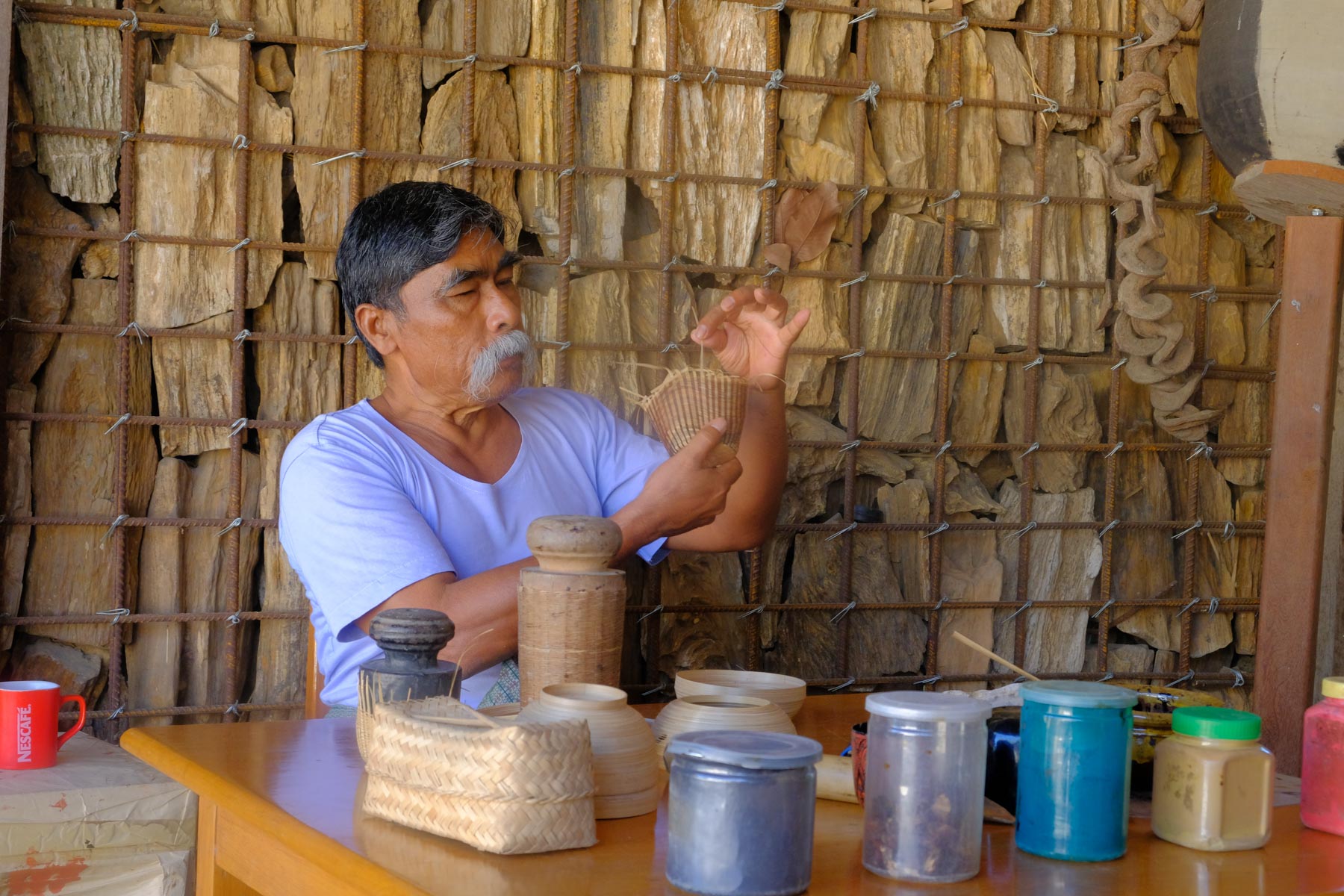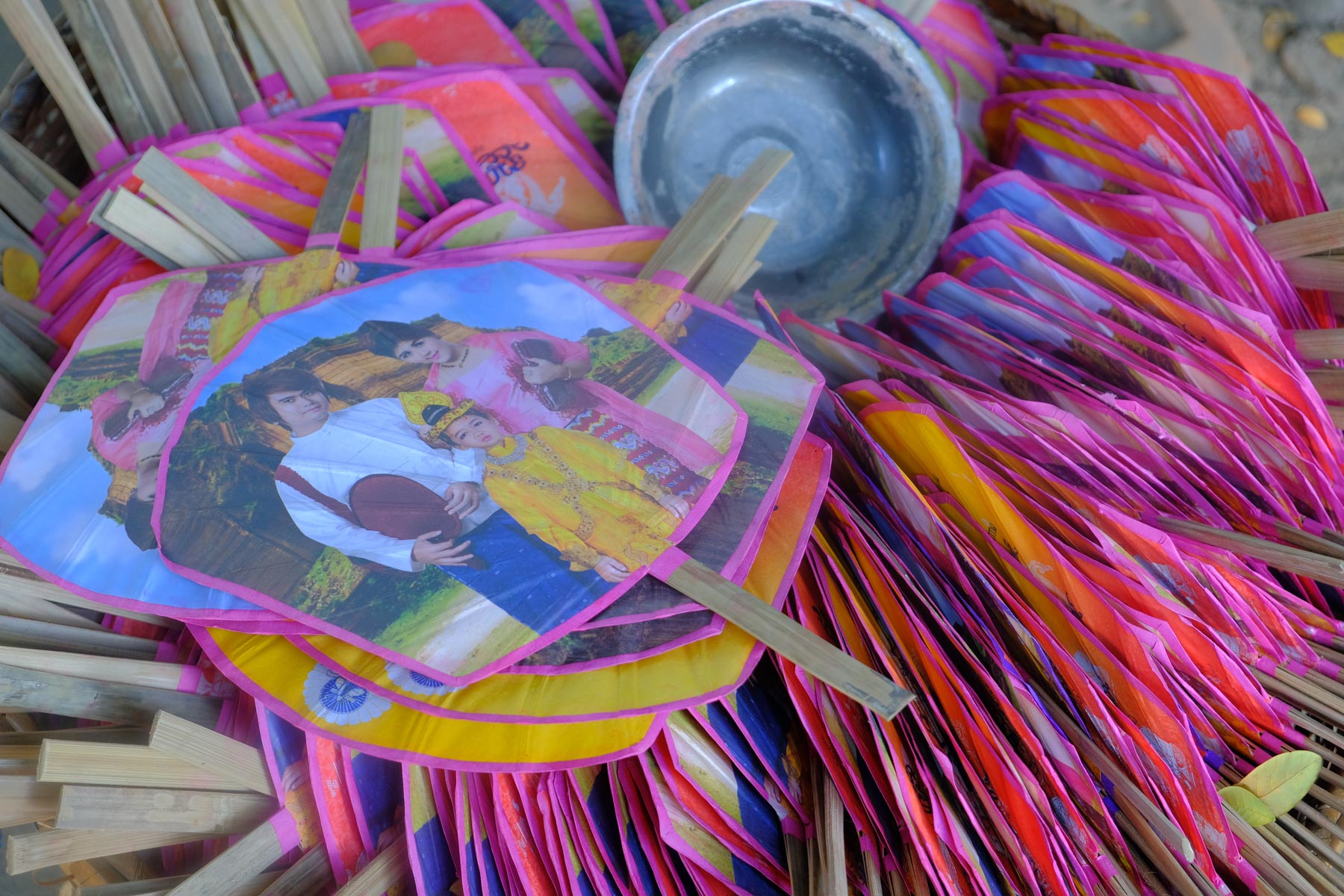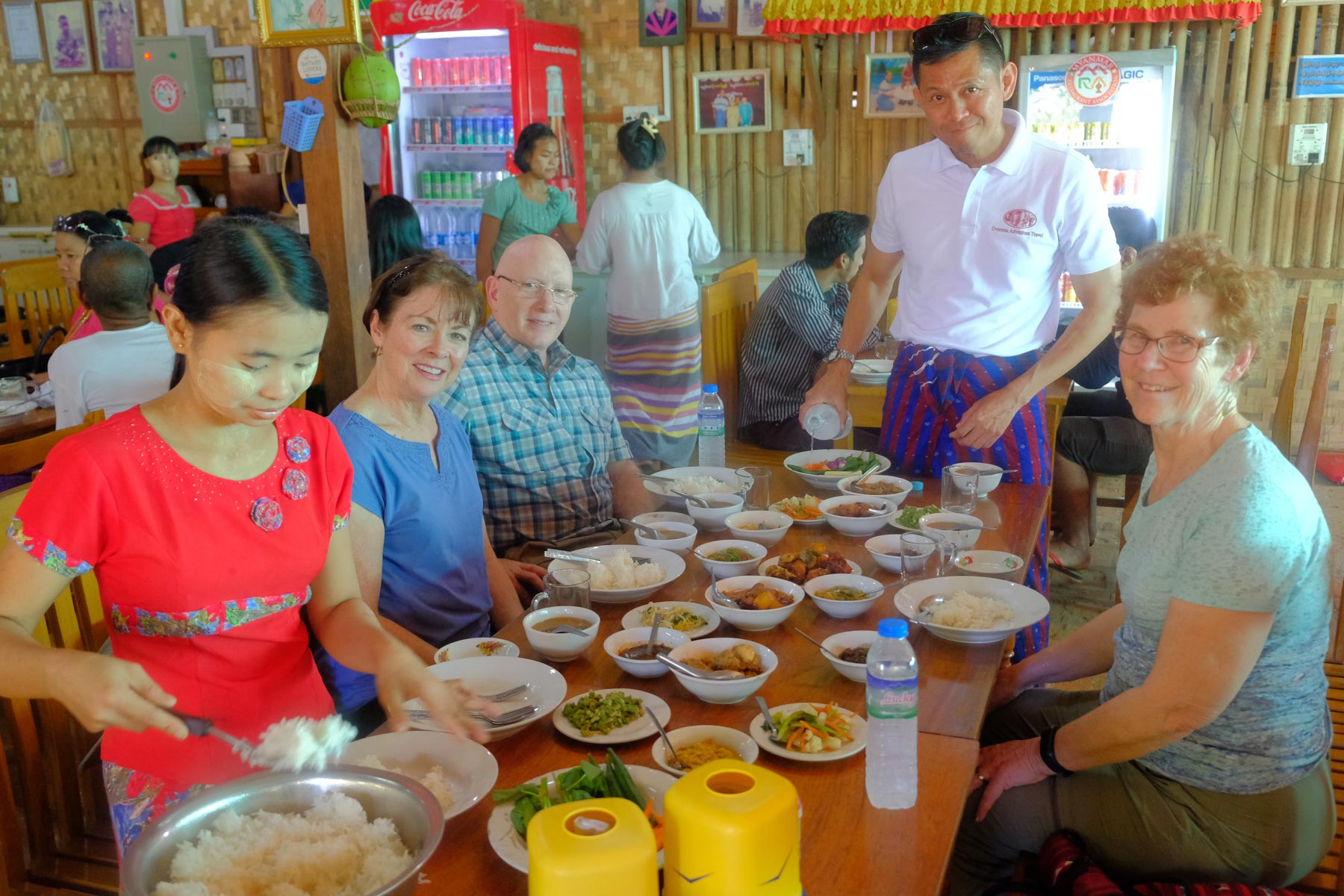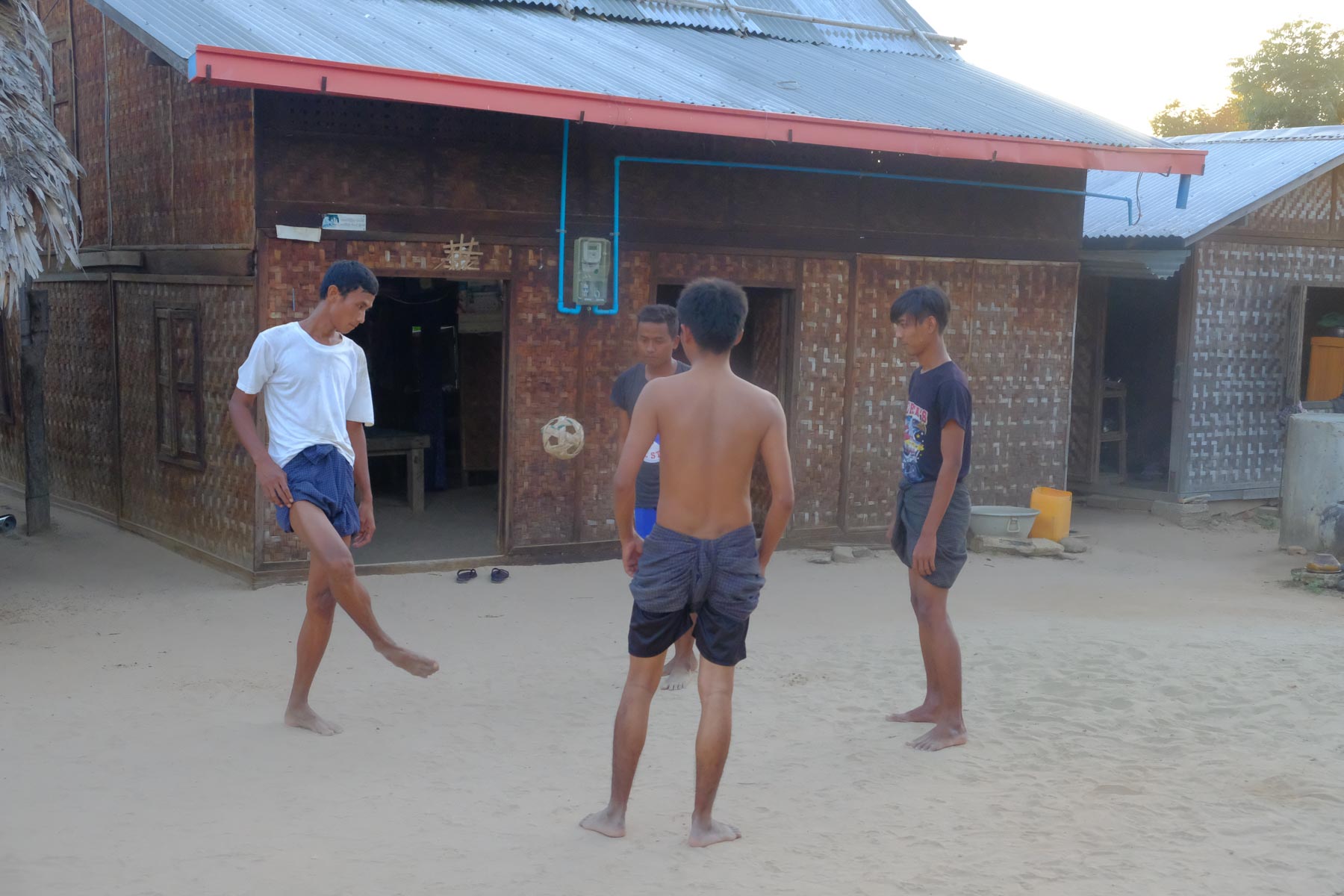Fair warning: Things are going from bad to worse. Here’s my picture count since coming to Myanmar:
11/15 130 pictures
11/16 175 pictures
11/17 345 pictures
11/18 570 pictures
See the problem? Get the picture?
We did it. We ascended the heavens, looked down on the temples in the dawn’s early light (to mix a metaphor or two) and landed with only the slightest bump and raised a glass of Champaign in celebration. All by 8:30 in the morning.
It was quite an operation. I’ll try to post pictures if the Internet gods permit (last night’s posting was a struggle). It took a 12-man ground crew to fill the balloon with air so that our pilot, Javier, could give it a blast of hot air to bring it upright. That brought the gondola into an upright position so that we could climb over its four-foot sides and tumble aboard. The gondola was divided into four sections holding four people each. Javier was in the middle at the controls.
Our initial cruise was at 2,000 feet while other balloons in the fleet (I counted 18 in all) were lower. Javier explained that by staying high we would catch winds that would bring us over a more interesting part of the temple area. And what a view! Side lighting from the rising sun made for a dramatic picture with the Irrawaddy River in the background. The trip lasted about an hour and covered 4 miles. Javier was able to keep the balloon rotating at a steady pace so everyone enjoyed the view from all vantage points.
This is a big operation; last season (six months) this company carried 23,000 people. Today they must have done more than 300. Javier is a hired pilot from Madrid. He comes here for the winter and in the summer runs his own balloon operation over Segovia, Spain.
After the hotel breakfast buffet we walked down the hill from our hotel and mounted horse-drawn carriages, two people per carriage, one facing forward (me) and one facing backward (Judy). We traveled about 45 minutes over dirt roads passing a continual series of temples, pagodas and stupas.
The horse carriages brought us to the Shwe Sandaw temple that features mosaic drawings on its inside walls that depict the life of Buddha, of course, but also scenes from everyday life as it was 250 years ago. The temple has the standard four Buddha statues at each entrance.
Outside the temple a group of tourists and a bunch of kids were milling around after touring the temple as part of a school field trip. It turns out that here, as in other Asian countries light-skinned people like us are an oddity. They politely asked, and Daniel facilitated, a number of group photo and selfie sessions. Much fun was had by all.
It’s not lunchtime yet; off to the Ever Stand Lacquerware workshop. We saw the entire process, starting with bamboo woven into the desired shape, then covered with lacquer and dried, layer-by-layer, for up to six months. The next step is to optionally etch and color the item by hand before it finds its way to the gift shop.
Did we buy something? You betcha: two very nice cups for our tea, and two bracelets.
The founder and owner told us that he uses the same process that has been handed down since the 11th Century and the etched designs come from the frescos we saw earlier in the temple.
I talked to him about the future of his company. He has eight kids and four grandkids and he is certain that they will continue the business. But if I understood him correctly only his daughter lives nearby and is active in the business. Let’s keep our fingers crossed that his karma will lead to successful continuation of this enterprise.
Lunchtime. Options: hotel chow or lunch with Daniel in a family-style restaurant in downtown Old Bagan, a local favorite. Yep, we went with Daniel. Good move, too. The set meal consists of maybe 15 small dishes with fish, chicken and pork, veggies of every description (stir fried and pickled) . . . I can’t begin to list them all. And of course a big dollop of white rice (skinny Daniel had three dollops). Desert included a three-ingredient concoction starting with a pinch of green tea leaves, then a pinch of ginger and a few crunchy nuts. Sorry, it defies description but it was really different and good.
Oh, the price of that spread? About four bucks per person for us four gringos including Daniel’s share.
We’re back at the hotel. Guess who’s nappin’ and whose typin’? Right again. At three PM we’re off for the optional “Life Beyond Bagan’s Ancient Pagodas.
Life beyond Bagan lived up to its name. We got the best view of what life’s like for lower- to middleclass citizens of this fair city.
Stop 1: A business that manufactures and sells a lentil bean spread that’s somewhat the same consistency of peanut butter, packaged in a bright package for sale in the local market. The process is to boil up the lentils, add some salt and let it sit for a day so it will congeal into a paste. Then it’s packaged up in various size bags and wrappers.
Men do the boiling to make the paste; women package the product. When we arrived the men had knocked off for the day and the ladies were still hard at work packaging. Is this a pattern? Ladies carry the water, ladies work the overtime? I will say the ladies seemed to make the best of their jobs, sitting cross-legged in a communal room, chatting while performing their repetitive tasks.
The reason for the OT is the festival that’s opening up in town this weekend and will run for several weeks. It’s a celebration of the end of harvest and beginning of the dry season. All the area merchants have closed down and set up booths at the festival. Farmers from the area will come to town to see the latest goods. Kind of sounds like the Hillsdale County Fair, doesn’t it?
I asked Daniel, “What if the owners of this business decide they want to expand their market, build a bigger factory, hire more people, expand their marketing and distribution? Could they?” His answer: no for two reasons. Under the socialist system that prevailed in Myanmar for 50 years there has been no financial and banking system to lend money. And the socialist system produced several generations of citizens that don’t understand business creation and management nor have the vision to build a business.
Across the street from the bean spread factory were two other mom-and-pop-and-the-kids operations. The first made fans. You know, the kind they used to hand out at funeral homes to wave back and forth to keep you cool? Here they’re sold for funerals and other life events such as weddings and investitures.
A boy (12 ish) is invested after which he is considered a man and then becomes a novice at a monastery like the one we visited in Yangon the other day. Daniel has been a novice three times before reaching the age 21 for periods of one to five weeks. He’s been a monk one time since turning 21 for a period of a few weeks. He’d enjoy doing it again if his schedule would ever permit.
The other business was another lacquer operation but much smaller in scale, being operated out of the family’s home. The quality was perhaps a notch lower than this morning’s operation but the prices were two notches lower so we bought a very nice plate.
Someone, probably an Army general, had the bright idea of building a tower so tourists can climb up and see some temples from an elevated position. I wanted to climb up but the gate was locked and so Michael and I had to retreat and join the other slackers and use the lift. Nice views especially for those in the group who missed the morning balloon ride.
Then we were off to a small village outside the Bagan city limits. We wandered from house to house, playing around with the little kids, dodging the Brahman bulls that roam the streets after a hard day out in the pasture and learning about the small enterprises they run. One home had another even smaller lacquer operation (somehow we resisted this time). Several were processing the recently harvested peanut crop. Four guys were playing chinlin bouncing a wicker ball back and forth using feet, knees and head soccer style. The houses were humble but the neighborhood had a pleasant vibe to it. They’d received electrical power service for the first time last year.
By now it’s 6 PM and time for a quick dinner and off to the hotel to get ready for tomorrow’s departure to Mandalay. (I hope I can resist the temptation to ask someone tomorrow, “Do you know the way to Mandalay?”Sorry, bad grand-dad joke.) But it turned out to be a second traditional Burmese dinner: beef, fish, veggies, salad surrounding a bowl full of rice. More elegant than this noon’s but only equally tasty than the $4 spread.
What made this evening’s dinner special was the traditional marionette puppet show put on in front of our table. The show consisted of a series of folk stories that are enacted by the puppets, accompanied by a traditional (i.e., non-Western) music performed by an orchestra and singers playing traditional instruments. It used to be a popular form of entertainment from the 15th century until the Brits arrived in the late 19th century. The government has attempted a revival and while these performers seemed quite skilled and talented it hasn’t achieved the popularity with the Burmese people that it did during the heyday (i.e., before televised football).
Now you can see why I took so many blamed pictures today.




